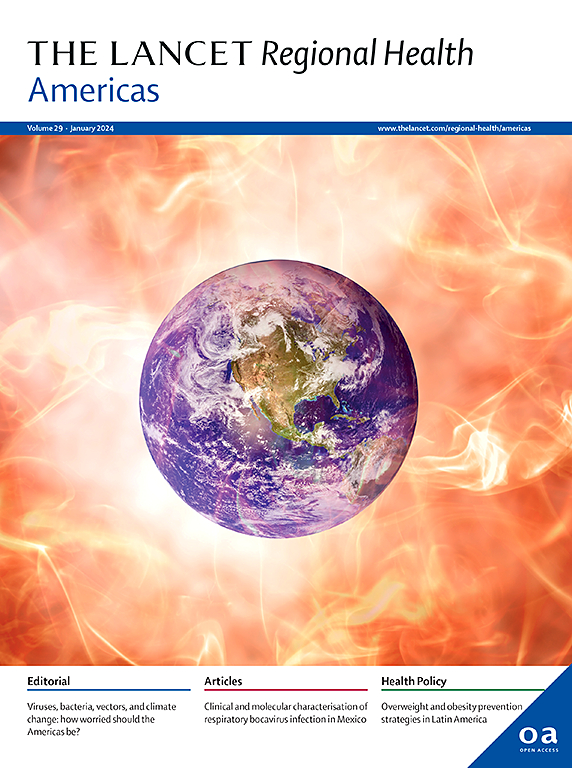Physical activity and BMI inequalities throughout childhood: a Brazilian birth cohort study
IF 7
Q1 HEALTH CARE SCIENCES & SERVICES
引用次数: 0
Abstract
Background
Utilising the 2015 Pelotas (Brazil) Birth Cohort, the current study investigated differences in physical activity (PA) and BMI-for-age between sex, race, and socioeconomic status (SES) at ages 1 (n = 4018), 2 (n = 4014), 4 (n = 4010), and 7 (n = 3867).
Methods
Demographics collected via surveys included sex at birth, skin colour, a proxy for race, at 4 years, and an assets index collected at all ages to determine SES. Height and weight estimated BMI-for-age and PA via wrist-worn accelerometers. Means and 95% confidence intervals described PA and BMI-for-age, using t-tests, ANOVAs, and chi-squared tests to determine significant differences. Trajectory models compared longitudinal patterns from 1 to 7 years.
Findings
Starting at age 2, Black and Brown children and poorer children engaged in more PA. Poorer children presented lower BMI-for-age at ages 4 and 7. Trajectory models revealed that boys, Black and Brown, and poorer children represented increasing and high PA groups. Boys and Black and Brown children were most prevalent in higher BMI-for-age trajectory groups.
Interpretation
The current study revealed PA and BMI-for-age inequalities across multiple demographic variables during early life. These results may reveal when inequalities may arise and reveal time points to intervene for populations at risk of poor health-related quality of life.
Funding
The present study was funded initially by the Wellcome Trust (095582), and partially by the Conselho Nacional de Desenvolvimento Científico e Tecnológico, Fundacao de Amparo a Pesquisa do Estado do Rio Grande do Sul, Children’s Pastorate, and the Department of Science and Technology (DECIT/Brazilian Ministry of Health).
儿童时期的身体活动和身体质量指数不平等:一项巴西出生队列研究
本研究利用2015年Pelotas(巴西)出生队列,调查了性别、种族和社会经济地位(SES)在1岁(n = 4018)、2岁(n = 4014)、4岁(n = 4010)和7岁(n = 3867)时身体活动(PA)和年龄bmi的差异。方法通过调查收集的人口统计数据包括出生时的性别、4岁时的肤色(代表种族)和在所有年龄段收集的资产指数,以确定社会经济地位。身高和体重估计bmi年龄和PA通过手腕上佩戴的加速度计。均值和95%置信区间描述了PA和年龄bmi,使用t检验、方差分析和卡方检验来确定显著差异。轨迹模型比较了1至7年的纵向模式。研究发现:从2岁开始,黑人和棕色人种的孩子以及家境较差的孩子会更多地参与课外活动。贫困儿童在4岁和7岁时的bmi值较低。轨迹模型显示,男孩、黑人和棕色人种以及贫困儿童代表了高和高PA群体。男孩、黑人和棕色人种儿童在bmi年龄轨迹较高的群体中最为普遍。目前的研究揭示了早期生活中多个人口统计变量的PA和bmi年龄不平等。这些结果可能揭示不平等何时可能出现,并揭示对有健康相关生活质量差风险的人群进行干预的时间点。本研究最初由威康信托基金(095582)资助,部分资金由国家环境保护协会Científico e Tecnológico、南大州健康基金、儿童牧师和科技部(巴西卫生部)资助。
本文章由计算机程序翻译,如有差异,请以英文原文为准。
求助全文
约1分钟内获得全文
求助全文
来源期刊

Lancet Regional Health-Americas
Multiple-
CiteScore
8.00
自引率
0.00%
发文量
0
期刊介绍:
The Lancet Regional Health – Americas, an open-access journal, contributes to The Lancet's global initiative by focusing on health-care quality and access in the Americas. It aims to advance clinical practice and health policy in the region, promoting better health outcomes. The journal publishes high-quality original research advocating change or shedding light on clinical practice and health policy. It welcomes submissions on various regional health topics, including infectious diseases, non-communicable diseases, child and adolescent health, maternal and reproductive health, emergency care, health policy, and health equity.
 求助内容:
求助内容: 应助结果提醒方式:
应助结果提醒方式:


